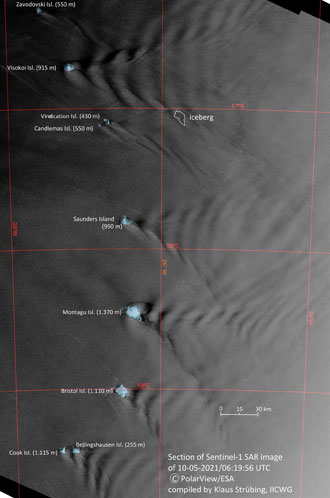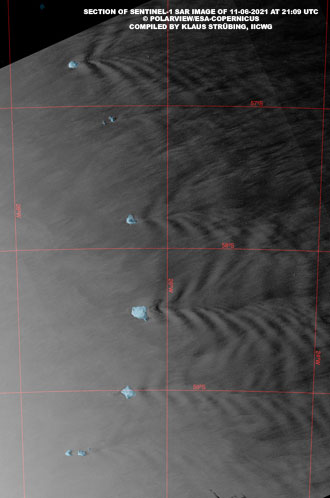Title: Copernicus Sentinel-1 catches effect of internal waves
Description: In this image acquired by Copernicus Sentinel-1 on 10 May 2021, on the lee side of each of the South Sandwich Islands wave patterns with a length of about 12 km can be recognised. The orientation of the patterns is shifting from a west-east-direction in the north to WNW- ESE further southwards.
The wave packet—consisting of up to 10 or more individual waves—extend to at least 150 km (80 nm) off the islands. The effect is created by the roughness of the sea surface. If it is flat (calm), there is only a minor backscattering of the C-band radar waves resulting on the image as a dark speckle pattern related to the wave troughs.
In contrast, on the wave crest capillary waves occur, which – with a length of only some centimetres – create a higher backscattering effect, thus a lighter grey-tone. This is highly likely created by sub-surface processes related to internal waves. The position of the unnamed iceberg can be located east of Candlemas Island.
For comparison, a more recent image of 11 June with very similar structures is added.
Copyright: Contains modified Copernicus Sentinel data (2021)/ processed by K. Strübing

